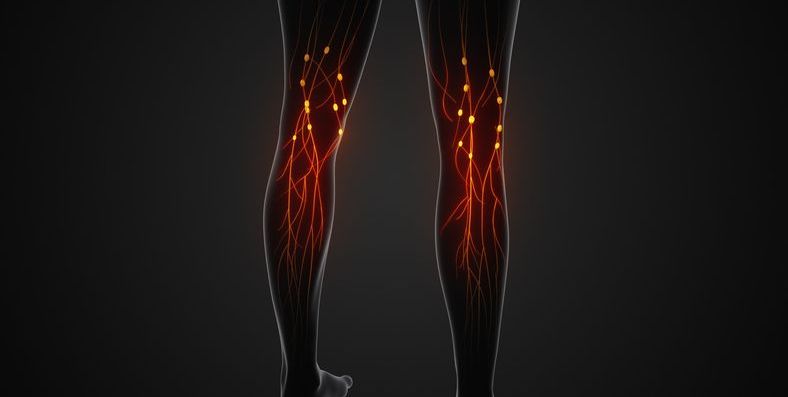
What is the Femoral Nerve?
The femoral nerve plays a vital role in your lower body. It starts in the lower spine and travels down your thigh, allowing you to feel sensations and control movements in your leg. This nerve is responsible for the sensations in the front and inner thigh, and as it moves into the lower leg, it becomes the saphenous nerve, affecting the inner calf and ankle.
Why Does Femoral Nerve Pain Occur?
Femoral nerve pain can have several causes:
- Trauma from a hit to the lower abdomen, groin, or thigh.
- Diabetes-related muscle weakening.
- Long periods in positions that put pressure on the leg, like the ‘frog’ position.
- Complications from hip surgery, where materials like bone cement can heat up and damage the nerve.
Signs of Femoral Nerve Compression
If you have femoral nerve compression, you might notice:
- Pain in the groin that feels better when you move your leg across your body.
- Tingling or numbness in your thigh and shin.
- Weakness in your legs when climbing stairs, causing your knees to buckle.
- Weaker muscle control when lifting your thigh or straightening your knee.
- A less responsive knee jerk when tapped.
How Serious is Femoral Nerve Compression?
If the damage to your femoral nerve results from an injury, the femoral artery and vein could also have been damaged and result in internal bleeding. The femoral artery is large and so this can be very dangerous and may itself cause compression of the femoral nerve.
The femoral nerve gives sensation to most of the leg and a loss of sensation can lead to injuries such as those caused by falling due to weak leg muscles. Prolonged pressure on the nerve can also cause reduced blood flow and tissue damage.
How Do We Diagnose Femoral Nerve Compression?
A full physical examination and detailed questions about the patient’s medical history and the level of sensations experienced are normally necessary to achieve a diagnosis. These will include the examination of specific muscles that the femoral nerve controls and will also determine if other nerves are affected. Obvious signs are femoral nerve pain, weakness in the leg and unusual sensations.
Tests include:
- Check your knee reflexes.
- Use MRI or CT scans to look for anything pressing on the nerve.
- Perform nerve conduction tests to see if electrical signals in the nerve are slow.
- Use electromyography to check muscle response.
- Apply neuromuscular ultrasound to get a detailed look at the nerve’s shape and condition.
Treatment Options
Underlying conditions or other causes of the compression are generally treated first. This may involve reducing blood sugar levels where diabetes is a factor or relieving pressure on the nerve. Problems caused by mild injuries may resolve themselves but possible treatments include:
- Pain relief medications and injections to reduce swelling.
- Physical therapy to strengthen muscles and improve movement.
- Braces to support your knee and help you walk.
- Surgery to remove any growths causing pressure.
- Changing some of your daily habits, like wearing looser clothes and avoiding certain activities.
How can Femoral Nerve Pain be Prevented?
Preventing nerve damage involves:
- Staying active to keep your leg muscles strong.
- Controlling diabetes to avoid nerve issues.
- Consulting with health experts to tailor preventive measures to your needs.
While treatments often lead to full recovery, severe cases might cause lasting changes in sensation and movement. Regular check-ups and adapting your lifestyle are key to managing these effects.
For more guidance and treatment options, visit our expert podiatrists in Brisbane. They are ready to help you manage femoral nerve pain effectively.


Recent Comments